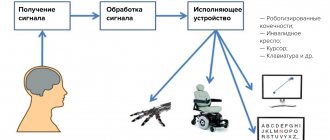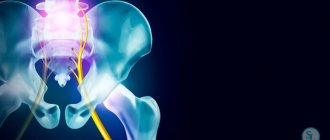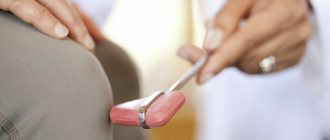Aicardi syndrome is a rare cerebroretinal genetic disorder. With this disease, the brain is partially or completely deprived of one of its main components – the corpus callosum. This is a consequence of a defect in the X chromosome. Changes occur in the retina leading to infantile spasms.
The corpus callosum is the central section of the nervous system, represented by nerve endings connecting the hemispheres of the brain.
Aicardi syndrome is not a separate form of epilepsy, but is an independent disease, which was described in 1965 by French neurologist Jean Ecardi.
Aicardi-Gutierrez syndrome is a threat to boys with the XXY chromosome set or Klinefelter syndrome.
According to statistics, to date there have been about 500 cases of this disease. It is most widespread in Japan.
However, nationality and race do not play a key role. It all depends on the level of medicine in the region. Lack of knowledge leads to undetected cases. Of the 2–4% of children who exhibit infantile spasms, Ecardi disease is detected.
Causes
Aicardi syndrome probably results from a new mutation in a gene located on the X chromosome. The exact gene or genetic mechanism that causes Aicardi syndrome is not yet known. A recently discovered report describing changes in the TEAD1 and OCEL1 genes in two girls with the syndrome was not confirmed in a large group of other girls with Aicardi syndrome. Thus, these genes do not appear to be the cause of Aicardi syndrome. The condition is believed to be fatal to newborn male children.
The parents of a woman with Aicardi syndrome are usually not affected. There have been no reports of transmission of Aicardi syndrome from the affected mother to her child. Other family members are also usually not at increased risk.
Symptoms and signs
Aicardi syndrome usually begins with involuntary muscle spasms between the ages of four months and four years.
Other symptoms may include epilepsy, mental retardation, profound muscle weakness (hypotonia), abnormally small head (microcephaly), abnormally small eyes (microphthalmia), incomplete development of the retina and nerve at the back of the eye (coloboma), and/or rib and/or abnormalities. spine.
Children of all ages with Aicardi syndrome experience significant delays in motor development. Aicardi syndrome can be life-threatening in childhood due to complications of upper respiratory tract infections.
Most girls with Aicardi syndrome have a severe delay in psychomotor development. In the neurological status, it is often noted that there is a significant decrease in the size of the skull (microcephaly), muscle hypotonia, possibly unilateral muscle hypertension and spasticity, brisk deep tendon reflexes or impaired performance of the limbs (hemi- or tetraparesis).
Agenesis of the corpus callosum in Aicardi syndrome is usually total, often accompanied by heterotopia of the cerebral cortex, cortical atrophy, structural asymmetry of the cerebral hemispheres, normal pressure hydrocephalus, polymicrogyria or pachygyria, choroidal cysts and papillomas, ventriculomegaly, intracerebral cysts, Dandy-Walker syndrome.
Clinical case
History of life and illness
A 5-year-old girl was admitted to the psychoneurological department for examination.
Child from the first pregnancy, first birth. The pregnancy proceeded normally. Childbirth at 39 weeks, physiological. Body weight at birth – 2950 g, height – 48 cm, Apgar score – 9 points. On the 3rd day she was discharged home in satisfactory condition.
At the age of 3 months, ophthalmoscopy revealed changes in the fundus, which were regarded as toxoplasmosis chorioretinitis. Despite the fact that tests (immunoglobulin titers G, M) did not reveal signs of the presence or contact with toxoplasmosis, antibacterial and immunomodulatory therapy was carried out, which did not produce a significant effect. The child grew and developed with delayed mental and statokinetic development.
At the age of 8 months after DPT vaccination, the child developed seizures of the type of infantile spasms, which occurred serially, from 5 to 20 spasms per cluster. The prescribed therapy with human immunoglobulin was ineffective. After the diagnosis of West syndrome was established, the girl was prescribed the antiepileptic drug vigabatrin; then, due to its ineffectiveness, a long-acting corticotropic drug, tetracosactide. The use of this treatment regimen helped to achieve remission for about 3 years; attacks resumed in the 4th year of the child’s life. Other family members are healthy. Now the girl is taking topiramate and valproic acid with no apparent effectiveness.
Neurological status
Inhibited, capricious. The shape of the head is normocephalic. No pathology of the cranial nerves was identified. Muscle tone and tendon reflexes are normal, without a clear difference between the sides. Coordinator tests are normal. Gait without elements of ataxia. Intelligence is reduced. Speech is at the level of vocalizations, individual short words.
Paraclinical studies
When conducting overnight video-EEG monitoring for 12 hours, periods of modified hypsarrhythmia were observed, preserving the features of the “burst-suppression” pattern - discharges of polyspikes with high-amplitude sharp waves with subsequent flattening of the EEG (Fig. 1).
Fundoscopy revealed chorioretinal lacunae (Fig. 2).
MRI of the brain revealed agenesis of the corpus callosum (Fig. 3).
Rationale for diagnosis
The presence in the girl of chorioretinal lacunae in both eyes, agenesis of the corpus callosum, serial epileptic seizures of the type of infantile spasms, hypsarrhythmia on the EEG, as well as severe delay in psychomotor and speech development allows us to establish the diagnosis of SA.
Affected Populations
There are approximately 500 known cases of Aicardi syndrome worldwide, with a particularly large number in Japan. The syndrome occurs in children of different racial backgrounds.
According to recent studies in Sweden, the prevalence of Aicardi syndrome ranges from 2 to 15 cases per 100,000 girls. Unfortunately, similar studies have not been conducted in Russia. However, given the phenotypic diversity and diagnostic difficulties, many cases of the disease remain undiagnosed. This allows us to revise data on the true prevalence of Aicardi syndrome upward; perhaps Aicardi syndrome is a more common cause of mental retardation and infantile spasms in girls than is currently believed.
Today, it is believed that the incidence of Aicardi syndrome among all children with infantile spasms is only about 2-4%.
Clinic
What do children with Aicardi syndrome look like? Symptoms are initially quite nonspecific because babies are born at term, vaginally, and appear healthy. Up to three months, newborns develop without clinical manifestations, then epileptic seizures appear. They are presented in the form of retropulsive symmetrical serial clonic-tonic convulsions of the limbs. In the vast majority of cases, this is also accompanied by infantile spasms of the flexor muscles. In rare cases, the onset of the disease occurs in the first month of life. Epileptic seizures cannot be controlled with medication.
In the neurological status of such children, there is a decrease in the size of the skull, a decrease in muscle tone, but at the same time unilateral disinhibition of reflexes or, conversely, paresis and paralysis. In addition, half of the patients have skeletal developmental anomalies: vertebral agenesis or absence of ribs. This leads to pronounced scoliotic changes in posture.
Diagnostics
To date, there is no specific laboratory diagnostic test or study that would allow a diagnosis of Aicardi syndrome. To do this you need:
- neurological examination;
- ophthalmoscopy;
- electroencephalography (EEG);
- magnetic resonance imaging with and/or without contrast;
- X-ray of the skeleton.
Magnetic resonance imaging can detect agenesis of the corpus callosum, asymmetry of the cortical hemispheres, heterotopia of the cortex, intracerebral cysts, choroid plexus papilloma, etc. Cortical axons, which normally should intersect, are not formed during its agenesis and, accordingly, are not identified during neuroimaging.
Agenesis of the corpus callosum allows the lateral ventricles to extend upward into the frontal and parietal white matter. This condition is called superior translocation of the lateral ventricles into the frontoparietal regions of the brain. The third ventricle undergoes a similar upward displacement, which is one of the neuroradiological markers of agenesis of the corpus callosum. The enlarged third ventricle, moving forward and upward, pushes the anterior horns of the lateral ventricles apart; with concomitant hydrocephalus, the volume of the ventricles increases, the posterior horns expand and bend towards the midline (the “grip” shape). It is likely that the lack of supportive function of the corpus callosum is the basis for the typical feature of agenesis of the corpus callosum - enlargement of the hemispheres, third ventricle and foramen of Monroy.
Typical changes in electroencephalography in the form of hypsarrhythmia, characteristic of infantile spasms, do not occur in all patients. The most characteristic changes in the seizure EEG consist of bursts of irregular fast and slow waves lasting from 3 to 6 seconds, which are interspersed with some flattening of the basic rhythm for 5-20 seconds, and the changes are not synchronized across the hemispheres. Electroencephalography shows the “split brain” phenomenon. Since in almost half (42%) of patients infantile spasms are combined with other types of epileptic seizures, EEG data may be contradictory.
Ophthalmoscopy reveals white or yellow-white, well-demarcated, round depigmented areas.
"The child is very bad"
It seemed that only one thing could speed up the doctors - manual control. Family friends had personal connections that helped push the right buttons. The MRI, which was such a hope, showed nothing. “Rejoice, you don’t have cancer in your head or spinal cord. We will look further."
When a child develops something completely incomprehensible or unclear, geneticists are called in. There are dozens of complex and rare genetic diseases, and not all of them are tested for in maternity hospitals. At the Center for Orphan Diseases, Alyosha was diagnosed with Krabbe disease, a form of leukodystrophy. The boy was given a genetic test for Crabbe. And his condition was getting worse.
“When our daughter was born, we blamed ourselves for everything.” How a mother changed her view of her child’s characteristics
Chronic lack of sleep, worry about her son, and separation from her eldest daughter exhausted Elena.
“Alyosha developed stomatitis, his entire mouth was covered in large ulcers, he could not eat, he was vomiting,” she recalls. “The boy practically stopped sleeping and cried constantly. He calmed down only in my arms and fell asleep only when rocked. In one of the rooms lay a child from an orphanage. Someone treated him to food that was unusual for his stomach, the boy overate and became poisoned. Several times a day he ran to the common toilet next to the nurse's station, preventing her from sleeping. The nurse shouted obscenities at the orphan. The entire children's department heard this, everyone wanted to sleep, and everyone woke up and flinched from the rude scream. Therefore, when they suggested that I be discharged and wait for the results of the Krabbe disease test at home, I agreed.
Elena still considers this her mistake. She is crying, although, as she admits, she “took a sedative before talking to the journalist.” Alexey Sr. distracted himself from Alexey Jr., walked up to his wife, stroked her head and calmly asked: “Should I bring some water?” Usually men don’t like women’s tears: they either get lost or get irritated. Alexey brought water for both of us and went off to play cars with his son.
— Alyosha’s temperature at home rose again, to 38 degrees. We called the pediatrician, she said to go back to the hospital. They didn't really want to see us at the hospital. The excuse was that there were no free places and there was no temperature at check-out. It arose, which means an infection has joined.
Elena and Alyosha had to spend more than 10 hours in the emergency department. The boy ate only what his mother grabbed from home. Elena herself did not eat anything. Until late in the evening, the mother tried to get hospitalization. Again I had to connect manual control and press buttons. Elena brought her son into the room at almost 10 pm. It turned out that the place in this hospital ward had been empty since 12 noon. It’s just that no one in this hospital wanted to deal with Alyosha.
“My son was immediately taken for a spinal cord puncture. I didn’t have time to leave the office and heard the doctor’s words: “The child is very bad.” Seeing me, the doctors shouted: “Close the door.” I simply froze with horror, went into the room and began to wait. When Alyosha was returned to me, he slept for so long due to weakness that I was again very frightened. After all, before that I had insomnia. I ran to the doctors, and in response I heard: “Mommy, first you complain that he doesn’t sleep, then you don’t like that he sleeps for a long time.”
At the same time, at the suggestion of a resident who accidentally heard Alyosha’s story, the boy was tested for herpes. Herpetic infection causes both fever and neurological complications. 90% of people on earth are carriers of herpes, but in few of them the disease manifests itself acutely. And herpes harms fetuses and babies most of all.
Alyosha actually had herpes.
The muscle tone made the boy's legs feel like metal.
Droppers 2-3 times a day helped - my tone began to decrease. But from acyclovir, which is used to treat herpes, the baby’s veins began to clog and stick together.
— The nurse pokes and pokes at the vein, tries to insert the needle into the veins on the head, neck, to no avail. On the 18th puncture I lost my nerve. “Do you want to refuse treatment?” - I heard from the nurse. “The boy was not given a central catheter; we were sent home to be treated with pills. Although the herpes titers were very high.
The family did not even remember the possibility of a genetic disease at that time. After all, Alyosha’s disease fit well into type 6 herpes. But the family still passed the test for a panel of 40 genes proposed at the Center for Orphan Diseases. At your own expense, such tests are not included in compulsory medical insurance. The price is more than 40 thousand rubles.
Alyosha fought with herpes, mom cried, dad was collected, the test, as expected, was done within the allotted 40 days.
Treatment of Aicardi syndrome
Treatment for Aicardi syndrome has not yet been developed. Symptomatic treatment is mainly used. The main treatment strategy is the relief of infantile spasms, which are often resistant to antiepileptic drugs; their treatment is complex and its effectiveness is low. Various medications are used in the highest possible doses.
Initial therapy begins with vigabatrin (Sabril) - 50-100 mg/kg/day and valproate (Depakine syrup) - 50-100 mg/kg/day. For frequent attacks, combinations of antiepileptic drugs with benzodiazepines (clonazepam) -0.25-2 mg/day, or phenobarbital (5-15 mg/kg/day) are prescribed, and suxilep 15-30 mg/kg/day can also be administered.
An alternative method is the use of corticosteroid hormones (ACTH, synacthen-depot IM, dexamethase, prednisolone) and octagam. The average dosage of prednisolone is 1-2.5 mg/kg/day, followed by a transition to the minimum maintenance dose. Hormones are prescribed in combination with basic antiepileptic drugs.
Vagus nerve stimulation can be used as a palliative surgical treatment. Since musculoskeletal defects can lead to scoliosis, physiotherapy and exercise therapy are used to prevent it, and surgical correction is possible.
Also in the section
| State and prospects of radiation-hygienic research in the Chernobyl Exclusion Zone. Serdyuk A.M., Karachev I.I., Stankevich V.V., Malenko N.D., Prisyazhnyuk V.E., Vashkulat N.P., Korchak G.I., Chernyuk V.I. Ukrainian Scientific Hygienic Center of the Ministry of Health of Ukraine,… |
| The role of symptomatic therapy in the treatment of patients with functional disorders of the pharyngeal mucosa Morozova S.V. One of the problems solved by practical otorhinolaryngology is the diagnosis and treatment of acute and chronic diseases,… |
| Does transgenic food harm us? Valentin DUBIN Leading researcher at the Institute of Naturopathy, Professor Transgenic food products are no longer a rarity on our table. But… |
| Azithromycin in the treatment of community-acquired pneumonia Sarygina O.D. Community-acquired pneumonia (synonyms: home, outpatient) is an acute disease that arose in a community setting, accompanied by… |
| Fatty hepatosis, non-alcoholic steatohepatitis. Clinical and morphological features. Forecast. Treatment of Podymov S.D. Fatty hepatosis (liver steatosis, fatty liver, fatty liver) is an independent disease or syndrome caused by fatty… |
| Clinical recommendations for the diagnosis and treatment of acute heart failure. Working group with specialized cardiology of the Association of Cardiologists of Ukraine 1. Introduction By means of clinical recommendations, rational diagnostics and… |
| Antimicrobial therapy of chronic bacterial prostatitis Mazo E.B., Popov S.V., Karabak V.I. Chronic prostatitis is the most common urological disease in men under 50 years of age, accounting for 8% of men… |
| Surgical treatment of perforated pyloroduodenal ulcers Doctor of Medical Sciences, Prof. Sopuev A.A., Doctor of Medical Sciences, Prof. Alybaev E.U., Ismailov K.K., Salibaev O.A. National Surgical Center of the Kyrgyz Republic Ways to improve... |
| Features of the formation of arterial hypertension in postmenopausal women Dr. med. E.Yu. Maychuk, Ph.D. S.V. Yureneva, I.V. Pechenkina, Academician of the Russian Academy of Medical Sciences, Professor A.I. Martynov MGMSU named after. ON THE. Semashko Scientific Center for Obstetrics, Gynecology and… |
| Prostate cancer: diagnosis and results of surgical treatment of localized and locally advanced forms Prostate cancer (PCa) is a major social and medical problem. In 1999, more than 179 thousand new cases of prostate cancer and 37 thousand... |
Forecast
The prognosis for girls with Aicardi syndrome varies depending on the severity of their symptoms.
The prognosis for Aicardi syndrome is usually serious due to severe mental retardation and the resistant nature of seizures. Some children (up to 25%) die in the first years of life. Of the surviving children, only 25% walk independently and only 50% have self-care skills.
Life expectancy is highly variable, depending on the severity of symptoms. The average life expectancy, according to various sources, ranges from 8.3 to 18.5 years. But there is information about a 32-year-old woman with Aicardi syndrome, as well as a 49-year-old woman with a moderate form of the syndrome
Story
In the 60s of the twentieth century, French neuropathologist Jean Aicardi described a dozen cases of this pathology. There are earlier mentions of them in the medical literature, but then they were classified as manifestations of congenital infection. Seven years after the first publication, the medical community introduced a new nosological unit - Aicardi syndrome.
But research into the disease continued, the number of symptoms expanded, and even new branches appeared. For example, Aicardi-Gauther syndrome, which manifests itself as encephalopathy with calcification of the basal ganglia and leukodystrophy.








